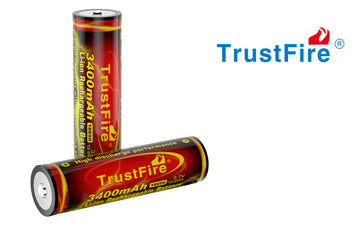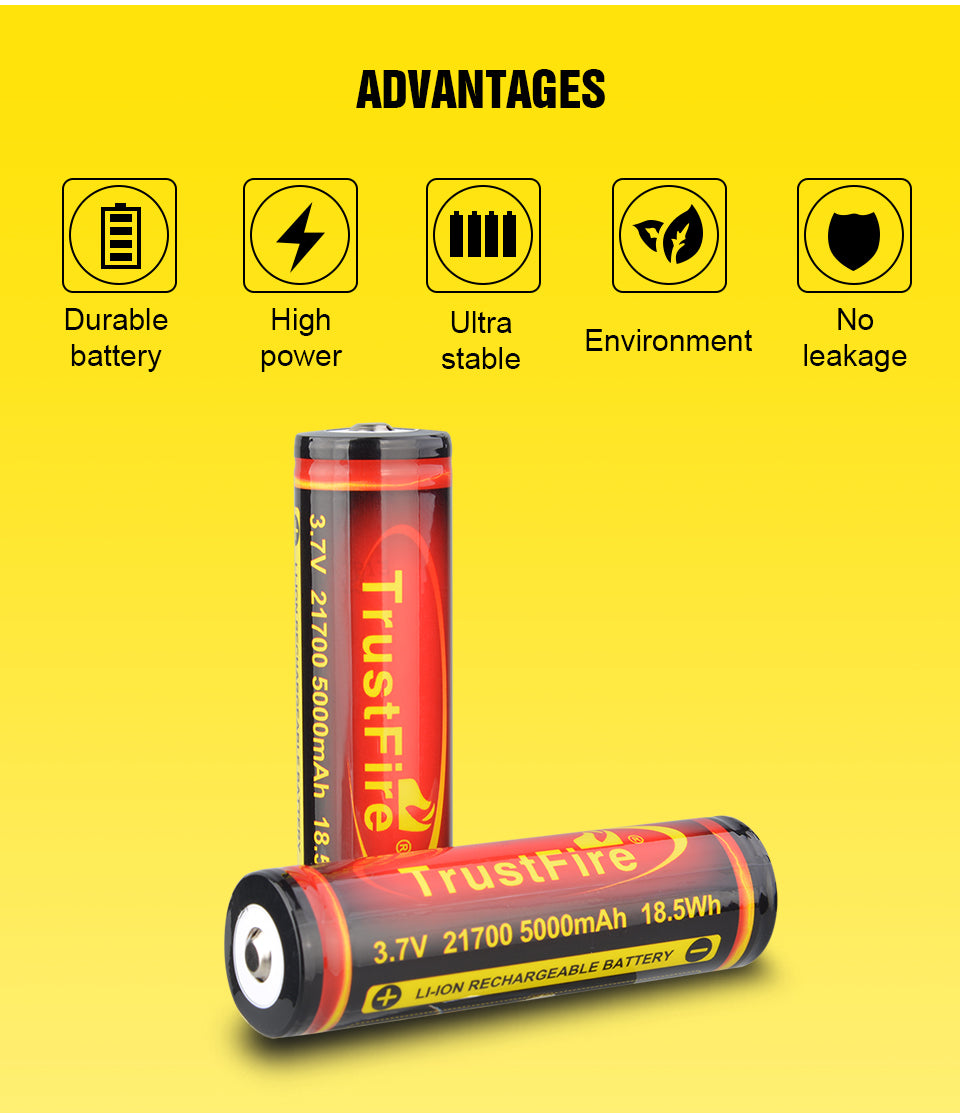
Flashlight brings convenience and benefits to our lives, and these are easily available at the electrical parts store. With a handheld flashlight, we can illuminate the dark, use it for emergency and survival situations, and find things that we might not be able to find or see during daylight. However, did you know that your flashlight batteries' right and proper maintenance will help extend their life?
This article will focus on tips in taking care of your flashlight's batteries so they last longer. We all want our batteries to work when we need them most, such as in emergencies or power outages. TrustFire Technology has focus on battery production over 14 years, like 18650 / 21700 / 26650 / 14500 etc...So let us get started with these 5 Tips For Handling Your Flashlight Batteries:
1) Remove batteries from flashlights
When storing your flashlights, remove the batteries to avoid battery leakage and corrosion, damaging the electronic components inside. With this, you can prolong its lifespan and increase its performance.
2) Keep batteries at an ideal temperature
Do not expose your flashlight batteries to extreme heat or cold as it can affect their performance. Exposure to temperatures below -4° F or above 122° F for extended periods will drain efficiency from your batteries. In addition, low-temperature conditions may also cause a battery's internal resistance to rising, reducing its storage capacity and ability to deliver an adequate current on-demand. To illustrate, a flashlight exposed to scorching weather will have reduced battery life compared to one exposed only to room temperature. On the other hand, a flashlight exposed to freezing weather might dim when you need it the most. So, it is ideal for storing your flashlight batteries in a room-temperature environment.
3) Store them properly
Storing your batteries can adversely affect their performance and storage capacity. Ensure that you place the batteries in a clean, dry, and cool area that prevents battery leakage or corrosion. In addition, ensure that the ends of the batteries are not exposed to metal objects as this may cause a short circuit. To illustrate, avoid placing your batteries near metallic objects such as keys and coins. Doing so will prevent potential damage from occurring during everyday use.
4) Have a recycling program for old batteries
If you tend to accumulate old batteries, ensure that you dispose of them properly by having a recycling program with rechargeable batteries. According to Flashlight Wiki, batteries contain toxic chemicals and metals such as lithium, lead, mercury, cadmium, and nickel which should not be released into the environment. Recycling your old used or spent batteries will help keep our environment clean and safe from harmful substances that may cause health issues.
5) Remove batteries when not in use
Taking care of your flashlight's batteries also means removing them during storage. Batteries can still discharge naturally while being stored, so leaving them inside will decrease their performance and lifespan. To illustrate, a battery left in a flashlight for extended periods can corrode and damage its components, so always take out your batteries after every use.
What batteries do flashlights use??
Today, flashlights are designed to use a different types of batteries. There are three major types of batteries: an alkaline battery, a carbon-zinc battery, and a lithium battery. All of which have their unique advantages and disadvantages. An alkaline, also known as a standard or dry cell, is inexpensive, but its performance will decrease the more it is used. On the other hand, a carbon-zinc battery will work better in colder weather than alkaline batteries that drain quickly in cold temperatures, making them unsuitable for outdoor activities where low temperatures are expected. Lastly, a lithium battery has better storage capacity than standard or carbon-zinc cells, but they can cost three times more, so choose your flashlight's battery depending on your needs.
What is the best battery for flashlights?
The answer to this question depends on what you plan to do with your flashlight. If you intend to use it in a cold environment during winter, choose a carbon-zinc or lithium battery. They can work well in low temperatures, but they have a relatively short lifespan than alkaline batteries. On the other hand, if you only need a flashlight for indoor activities, an alkaline battery will be just fine, and its lifespan more than makes up for the additional cost of using carbon-zinc or lithium batteries. In addition, an alkaline battery can't leak, so there is no risk of corrosion which damages metal parts inside your flashlight.

In conclusion, take good care of your flashlight's batteries by following the tips provided in this article. Follow these simple steps to keep your batteries at their best. Try these easy ways to take good care of your flashlight batteries, and you will be rewarded with a bright, functioning light for many years.
(Let’s discuss about PCB board on batteries for our next article)
